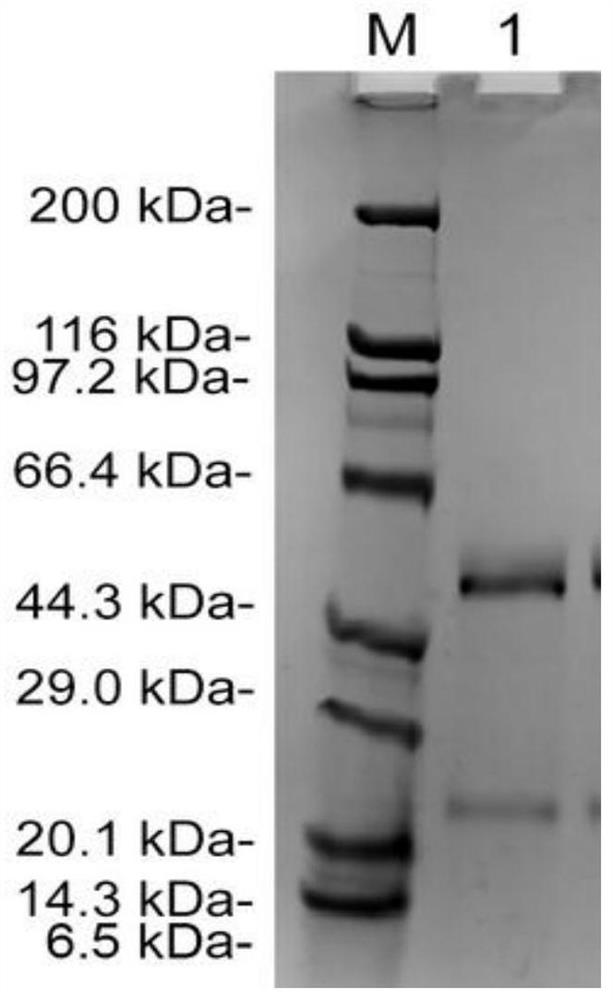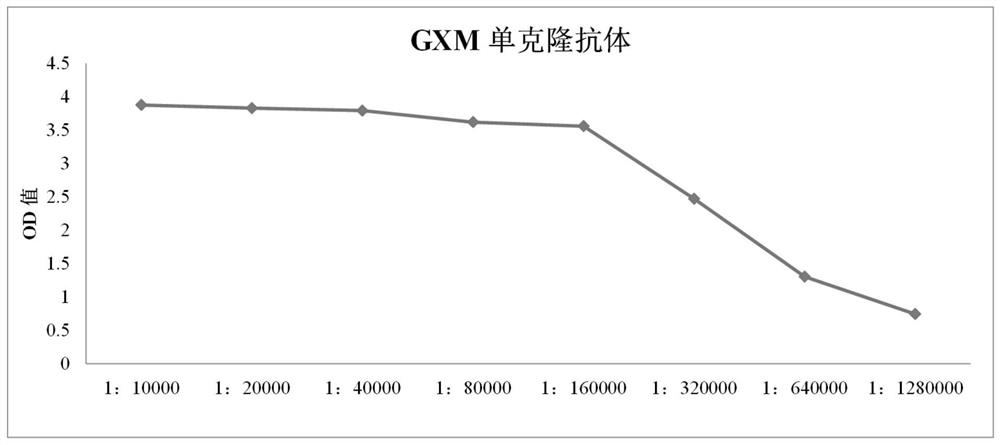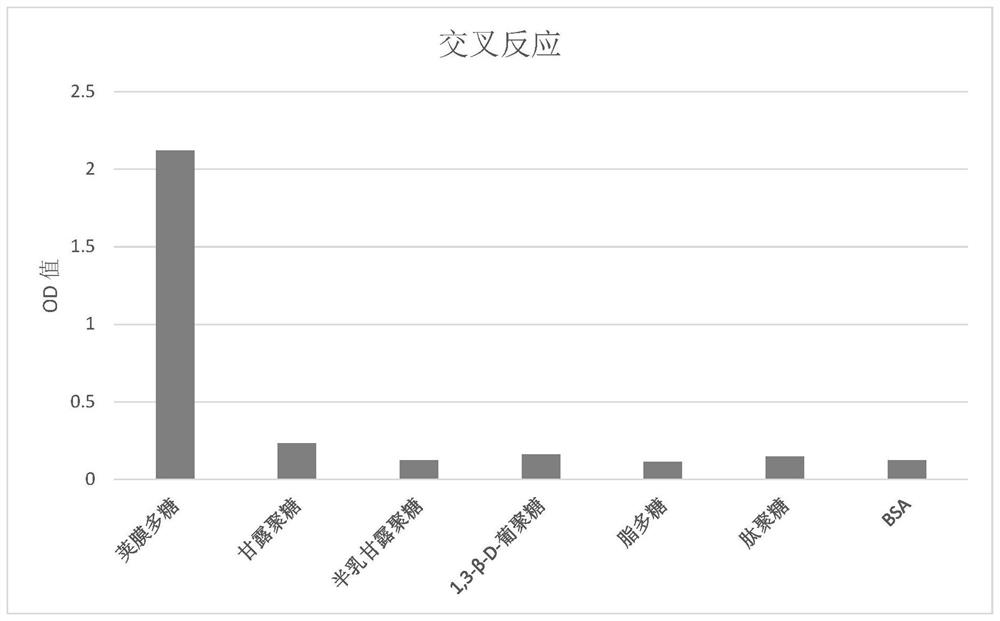Rabbit-derived monoclonal antibody against Cryptococcus capsular polysaccharide and its application
A monoclonal antibody and capsular polysaccharide technology, applied in the direction of antibodies, applications, antifungal agents, etc., can solve the problems of poor specificity and weak affinity, and achieve good stability, strong affinity, and good specificity
- Summary
- Abstract
- Description
- Claims
- Application Information
AI Technical Summary
Problems solved by technology
Method used
Image
Examples
Embodiment 1
[0053] Example 1 Animal immunization
[0054] (1) Preparation of Cryptococcus capsular polysaccharide (GXM)
[0055] Cryptococcus was inoculated into Sabouraud's liquid medium (1% peptone and 4% D-glucose per liter), cultured at 30°C for about 46 hours, and the shaker speed was 200 rpm / min. Stop the culture when it drops to 4.2~4.5; sterilize the culture solution at 121°C for 40 min with moist heat to kill the bacteria and possible spores, and collect the supernatant by centrifuging the obtained bacteria solution;
[0056] After washing the cells with physiological saline, slowly add calcium acetate powder to a final concentration of 5%, and then add glacial acetic acid to adjust the pH to 5.0; slowly add three times the volume of 95% ethanol to the mixture, precipitate out, and let stand at 4°C overnight; centrifuged to collect the precipitate, dried, and reconstituted with deionized water; added CTAB to treat the reconstituted solution, and centrifuged to collect the precip...
Embodiment 2
[0063] Example 2 Preparation and screening of hybridoma cells
[0064] The titer of the prepared rabbit antiserum was tested, and if qualified, the rabbit spleen was used for cell fusion to prepare a monoclonal hybridoma cell line. The method is as follows:
[0065] (1) Preparation
[0066] The immunized New Zealand big-eared rabbits were killed, and the spleen was taken out under aseptic conditions, washed once with cell culture medium, then ground, passed through a stainless steel mesh, and the obtained cells were centrifuged and washed twice with cell culture medium;
[0067] Take the SP2 / 0 myeloma cells in logarithmic growth phase and mix them with splenocytes, wash them once with cell culture medium without fetal bovine serum, centrifuge, discard the supernatant, add polyethylene glycol solution, and treat at 37°C for about 90 s ; Use cell culture medium without fetal bovine serum to terminate the reaction, centrifuge, resuspend cells with HAT selection medium containing...
Embodiment 3
[0071] Example 3 Isolation of antibody variable region genes from hybridoma cells by RT-PCR
[0072] After homogenizing the hybridoma cells, adding a cell lysate to extract RNA, using isopropanol to precipitate RNA from the aqueous layer, washing the precipitated RNA after centrifugation, removing impurities, resuspending and performing reverse transcription to obtain cDNA;
[0073] PCR was performed with specific primers from New Zealand rabbits, and the hybridoma cell cDNA was used as the template to amplify the variable region genes of the heavy and light chains of the antibody. A 50 μL system contained 5 μL cDNA, HotStarTaq Plus enzyme, dNTPs and 0.5 μM Specific primers were used for PCR amplification under the following conditions: pre-denaturation at 94°C for 5 min; 94°C for 30 s, 55°C for 30 s, 72°C for 50 s, 35 cycles; 72°C for 7 min; 1% agar for the obtained PCR product Glycogel electrophoresis was used to identify, recover the target fragments, send samples for seque...
PUM
 Login to View More
Login to View More Abstract
Description
Claims
Application Information
 Login to View More
Login to View More - R&D
- Intellectual Property
- Life Sciences
- Materials
- Tech Scout
- Unparalleled Data Quality
- Higher Quality Content
- 60% Fewer Hallucinations
Browse by: Latest US Patents, China's latest patents, Technical Efficacy Thesaurus, Application Domain, Technology Topic, Popular Technical Reports.
© 2025 PatSnap. All rights reserved.Legal|Privacy policy|Modern Slavery Act Transparency Statement|Sitemap|About US| Contact US: help@patsnap.com



